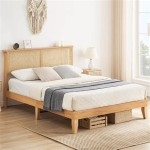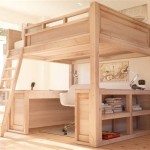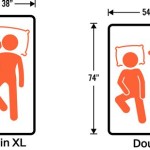How Long Does a Child Need Bed Rails?
Bed rails, also known as bed guards, are safety devices that are attached to the sides of a bed to prevent children from falling out. They are a common sight in many nurseries and bedrooms, offering parents peace of mind while their little ones sleep. However, the question often arises: how long does a child actually need bed rails?
The answer is not straightforward, as it depends on a variety of factors including the child's age, developmental stage, sleep habits, and overall safety risks. While some children may outgrow the need for bed rails sooner than others, it is crucial to prioritize safety and consider all relevant factors before making a decision.
Age and Developmental Stage
Generally, toddlers and preschoolers are more likely to need bed rails due to their limited motor skills and increased risk of falling out of bed. As children grow older, they develop better coordination and balance, making them less prone to accidental falls. It is essential to consider the child's individual development and their ability to safely navigate their sleep environment.
A good rule of thumb is to start with bed rails and gradually remove them when the child consistently demonstrates independence and is able to safely get in and out of bed without assistance. This may occur around the age of 4 or 5, but it is essential to observe each child's individual development and adjust accordingly.
Sleep Habits and Risk Factors
A child's sleep habits and potential risk factors can significantly influence the need for bed rails. If a child frequently tosses and turns in their sleep, is prone to sleepwalking, or has a history of falling out of bed, bed rails may be necessary for a longer period. Similarly, children who share a bed with siblings or pets may benefit from bed rails to ensure their safety.
It is important to assess the sleeping environment for potential hazards as well. If there is a gap between the mattress and the bed frame or if the child sleeps on a high bed, bed rails may be necessary to prevent falls. Additionally, consider the child's ability to climb and whether they may be tempted to use the bed rails as a ladder to get out of bed.
Child's Comfort and Anxiety
Beyond safety, it is also important to consider the child's emotional well-being when deciding whether or not to use bed rails. Some children may feel reassured and secure with the presence of bed rails, while others may find them restrictive and prefer to sleep without them. Listen to your child's concerns and work together to find a solution that balances safety with comfort.
If a child expresses anxiety or discomfort with bed rails, consider gradually introducing them or using alternative strategies such as a soft mattress or a low bed frame. It is crucial to create a safe and supportive environment that allows the child to feel secure and sleep soundly throughout the night.
Conclusion
The decision to use bed rails is ultimately a personal one, based on individual needs and circumstances. By carefully considering the child's age, developmental stage, sleep habits, and overall safety, parents can make an informed decision that prioritizes both safety and wellbeing. It is always recommended to consult with a pediatrician or other healthcare professional for personalized advice and guidance.

Best Bed Rails For Kids Safe Sleeping Today S Pa

How To Buy The Best Bed Rails For Your Baby Choice

Best Bed Rails For Kids And Toddler Beds 2024 Mattress Advisor

Best Toddler Bed Rails 2024 Forbes Vetted

Regalo Swing Down Extra Long Bedrail Bed Rail Crib Toddler Elderly Child Safety 885548673004

Bed Rails For Toddlers 59 L Toddler With Breathable Fabric Infant Safety Guardrail Rail Twin Children Gray One Side Com

Swing Down Bed Rail Regalo Baby

71 Bed Rails For Toddlers Full Size Queen King Side Guard Universal Rail Gray Com

Baby Joy Bed Rail For Toddlers 57 Extra Long Height Adjustable Foldable

Febfoxs 59 Toddler Bed Rails Rail For Toddlers 30 Levels Of Height Adjustment Baby Guard Foldable Safety Crib Children Grey 1 Side Com







